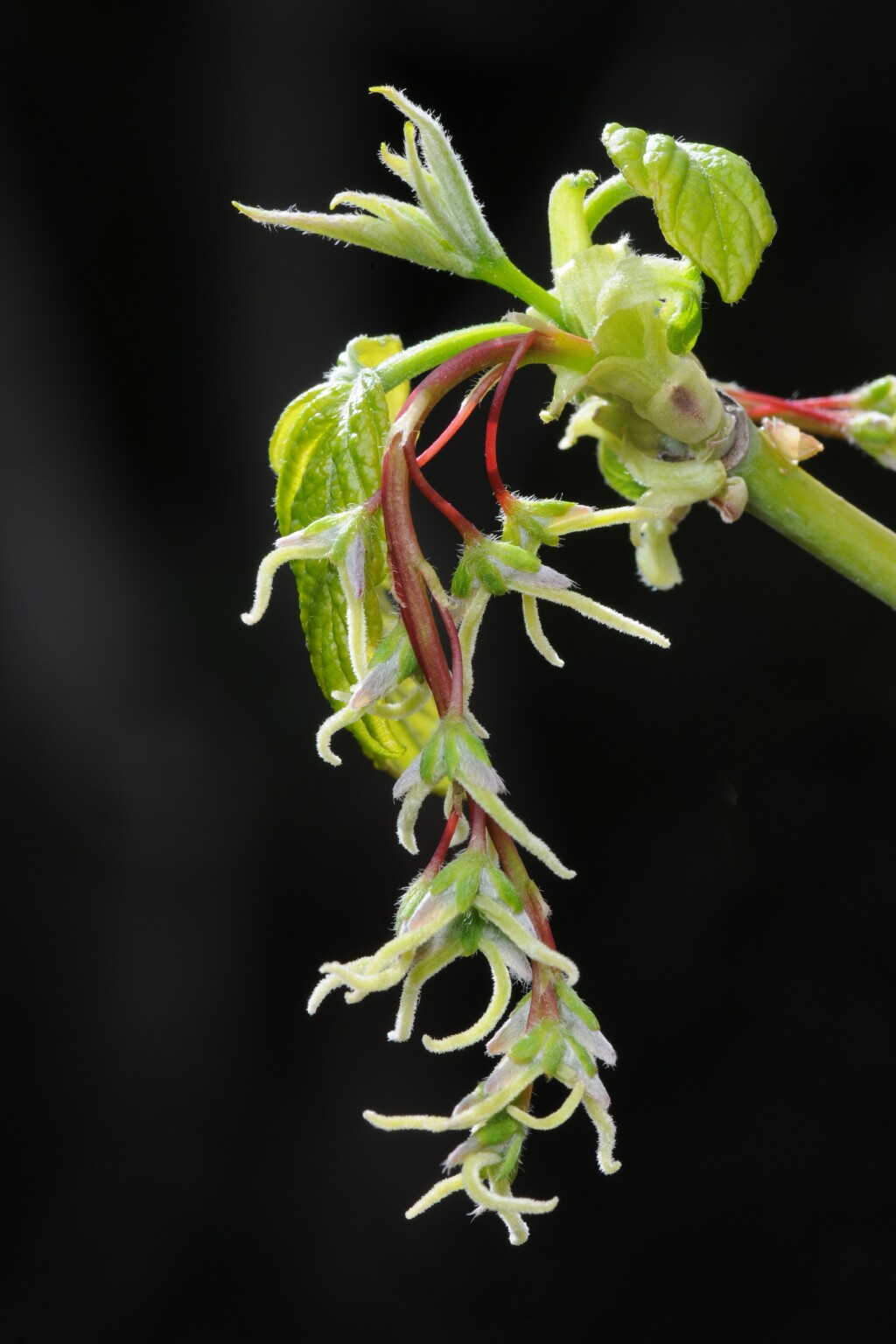Acer negundo
L. Box ElderSlender, often multi-stemmed deciduous tree to c. 20 m high; usually dioecious. Young branches often waxy. Leaves pinnately compound with 3–9 leaflets, each c. ovate, 3–10 cm long, 2–8 cm wide, obtuse at base, entirely green, or white-variegated, with scattered short hairs beneath, denser along veins; margins irregulary toothed to shallowly lobed; petioles 6–10 cm long. Flowers in pendent racemes 2–15 cm long, terminating short lateral shoots, appearing with leaves; pedicels of male flowers hair-like, 2–7 cm long, those of females coarser and shorter (to c. 4 cm long); sepals oblong-ovate, c. 1 mm long, green; petals absent; nectary disc absent; stamens usually 5. Samaras c. 4 cm long, the seed compartment flattened ellipsoid, c. 1.5 cm long, the wings divergent, prominently veined. Flowers Sep.–Nov.
VVP, VRiv, GipP, Gold, CVU, EGL, HSF, HNF. Also naturalised WA, SA, NSW. Native to North America. Naturalized in Melbourne suburbs and surrounds (e.g. Plenty River, Warburton), Myrtleford and Nowa Nowa areas, but probably more widespread than current records suggest.
Variegated forms soon revert to wholly green-leaved plants in the wild. In cultivation, green-leaved sucker stems are usually removed to retain the variegated foliage of the central stem. Many variegated cultivars are grown.
Walsh, N.G. (1999). Aceraceae. In: Walsh, N.G.; Entwisle, T.J., Flora of Victoria Vol. 4, Cornaceae to Asteraceae, pp. 149–150. Inkata Press, Melbourne.
 Spinning
Spinning




